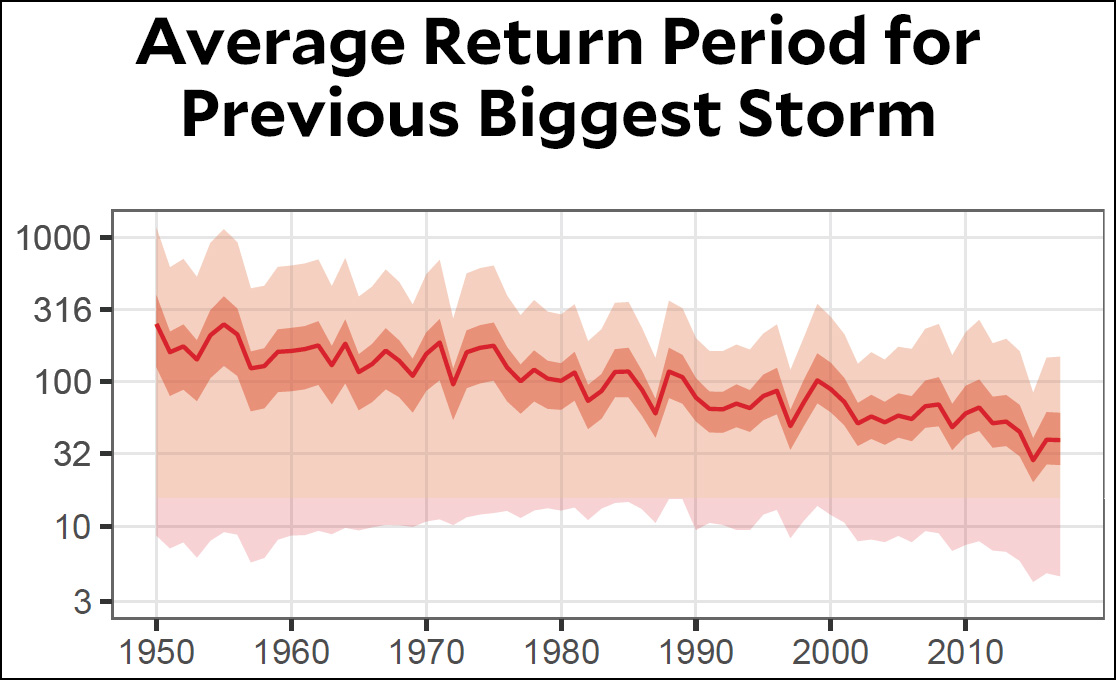Spoiler alert: global warming made the destruction of Hurricane Harvey both worse and more likely. In a new paper by Mark Risser and Michael Wehner of Lawrence Berkeley Labs, they first show us the rainfall trend for Houston over the past 70 years:

The upward trend is clear. I’ve added the dashed line showing Hurricane Harvey, which dropped 481 mm of rain over the greater Houston area. Next up, here’s the trend in the likely return period for the previous biggest storm (300 mm):

In 1950, a storm dropping 300 mm of rain on Houston was likely to occur once every 300 years. By 2016, such storms were expected every 30 years. These trends are partly due to climate change, which leads the authors to this conclusion:
We find that human-induced climate change likely increased the chances of the observed precipitation accumulations during Hurricane Harvey in the most affected areas of Houston by a factor of at least 3.5. Further, precipitation accumulations in these areas were likely increased by at least 18.8% (best estimate of 37.7%).














